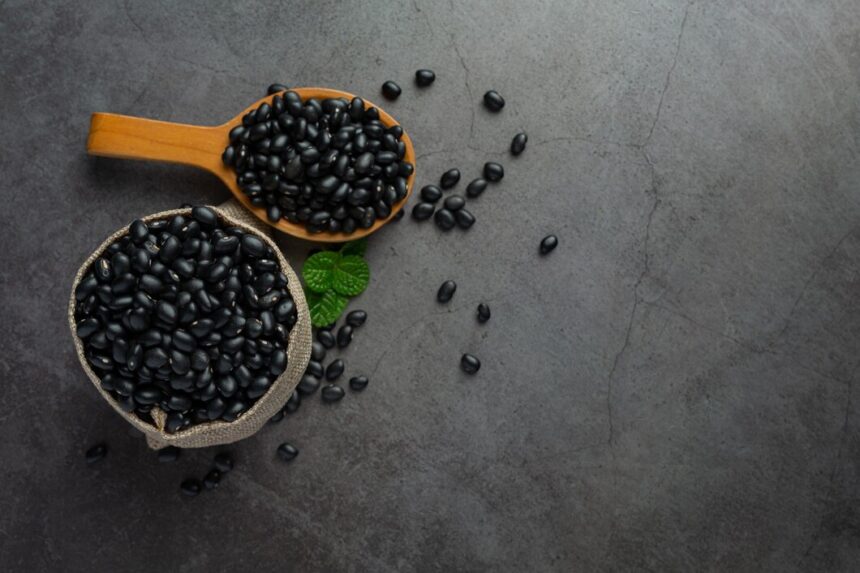Black beans, a nutritious and versatile legume, are an integral part of South Africa’s agricultural landscape, providing essential protein and dietary fiber to local diets. To meet the growing demand for high-quality black beans, farmers must adopt techniques that enhance both yield and quality. Here, we explore various strategies for optimizing black bean production in South Africa:
- Selecting Suitable Varieties: Choosing the right variety of black beans adapted to local growing conditions is crucial for achieving optimal yield and quality. Farmers should select varieties known for their disease resistance, adaptability to local climate and soil conditions, and desirable agronomic traits, such as uniformity in size and color.
- Soil Preparation and Fertility Management: Black beans thrive in well-drained, fertile soils with a pH range of 5.5 to 7.5. Prior to planting, farmers should conduct soil tests to assess nutrient levels and pH and make necessary amendments to optimize soil fertility. Implementing practices such as cover cropping, crop rotation, and organic matter incorporation can improve soil structure, nutrient retention, and water-holding capacity, leading to healthier plants and increased yield.
- Proper Planting Techniques: Paying attention to planting techniques can significantly impact black bean yield and quality. Planting depth, spacing, and timing are critical factors to consider. Black beans should be planted at the appropriate depth (typically 3-5 cm), with adequate spacing between rows and plants to ensure optimal growth and airflow. Planting during the optimal planting window for your region and avoiding planting during periods of extreme heat or moisture stress can promote uniform germination and vigorous plant growth.
- Optimizing Water Management: Providing consistent and adequate moisture is essential for black bean growth and development, especially during flowering and pod formation stages. Implementing efficient irrigation systems, such as drip irrigation or furrow irrigation, can help conserve water and deliver precise amounts to the root zone. Monitoring soil moisture levels and adjusting irrigation schedules based on weather conditions and crop needs can prevent water stress and optimize yield and quality.
- Weed Control: Weed competition can significantly reduce black bean yield and quality by competing for water, nutrients, and sunlight. Implementing effective weed control strategies, such as timely cultivation, mulching, and the use of herbicides, can suppress weed growth and minimize competition with black bean plants. Integrated weed management practices, including crop rotation and cover cropping, can help reduce weed pressure and promote a healthier crop stand.
- Pest and Disease Management: Black beans are susceptible to various pests and diseases, including aphids, bean beetles, and fungal pathogens. Implementing integrated pest and disease management practices, such as crop rotation, resistant varieties, and timely application of pesticides or biopesticides, can help minimize yield losses and maintain quality. Regular scouting and monitoring for pest and disease pressure can enable early intervention and effective control measures.
- Optimal Nutrient Management: Providing balanced nutrition is essential for maximizing black bean yield and quality. Farmers should develop a nutrient management plan based on soil test results and crop nutrient requirements. Applying fertilizers at the right time, rate, and placement can ensure that black bean plants have access to essential nutrients throughout the growing season. Avoiding excessive nitrogen fertilization can promote healthy vegetative growth and reduce the risk of lodging and disease susceptibility.
- Supporting Plant Health and Vigor: Promoting plant health and vigor is key to achieving high-quality black bean crops. Practices such as crop rotation, soil conservation, and disease prevention can reduce stress on plants and enhance their resilience to environmental challenges. Providing adequate support, such as trellising or staking, can prevent lodging and ensure that plants remain upright, allowing for better air circulation and sunlight penetration.
- Harvesting and Post-Harvest Handling: Proper harvesting and post-harvest handling are critical for preserving black bean quality and maximizing market value. Harvesting black beans at the optimal stage of maturity, typically when pods are fully filled and firm, can ensure maximum yield and quality. Prompt removal of harvested beans from the field, careful handling to avoid damage, and proper drying and storage conditions can minimize post-harvest losses and maintain seed viability and nutritional value.
- Continuous Monitoring and Evaluation: Regular monitoring and evaluation of crop performance are essential for identifying potential issues and making timely adjustments. Farmers should monitor crop growth, development, and pest and disease pressure throughout the growing season, using tools such as field scouting, remote sensing, and agronomic data analysis. Analyzing yield and quality metrics at harvest and comparing them to established benchmarks can inform future management decisions and drive continuous improvement in black bean production practices.
By implementing these techniques for enhancing quality and yield in black beans, South African farmers can optimize crop performance, meet market demand, and contribute to food security and agricultural sustainability. By integrating best practices in soil management, crop nutrition, pest and disease control, and post-harvest handling, farmers can maximize the potential of black bean production and enhance profitability and resilience in their agricultural operations.
Join 'Farmers Mag' WhatsApp Channel
Get the latest Farming news and tips delivered straight to your WhatsApp
CLICK HERE TO JOIN






